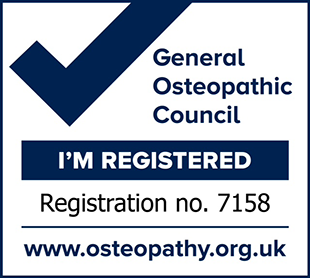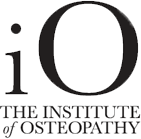Deltoid Strain/Tear
The deltoid muscle is divided into three different portions, the anterior (front), middle, and posterior (back). The deltoid originates from the acromion and clavicle and inserts onto the deltoid tuberosity of the humerus. Its role is flexion and internal rotation of the shoulder (anterior portion); abduction of the shoulder (middle portion); extension and external rotation of the shoulder (posterior portion). The axillary nerve, which comes from the neck,(C5) supplies the deltoid muscle.
There are many injuries in the shoulder that can mimic a deltoid strain. At times, these injuries can be difficult to differentiate from other structures that may be injured, including the rotator cuff, glenoid labrum, biceps tendon, acromio-clavicular joint, (AC joint), shoulder dislocation/fracture and contusion.
Many of these injuries can be treated conservatively, however some of these injuries require surgical intervention and need to be evaluated by the Sports Injuries Specialist – Registered Osteopath to determine the extent of the injury.
Deltoid strains can be caused by numerous mechanisms. Most commonly, they may result from overuse of the muscle without adequate rest. This can lead to discomfort in the region of the deltoid muscle, with associated swelling and loss of function. A forced eccentric contraction of the shoulder, (lengthening of the muscle belly whilst contracting) can also lead to straining of the deltoid muscle, e.g. by weight lifting. Less commonly, a direct traumatic blow to the shoulder may also cause a deltoid strain.
Deltoid strains are diagnosed by looking at the mechanism of injury and the symptoms the patient will present. A physical examination is imperative by the Sports Injuries Specialist – Registered Osteopath. Patients with deltoid strains often present with pain on palpation of the involved area of the deltoid muscle belly. In more severe cases, with actual tears of the muscle, a palpable defect may also be felt.
The shoulder is assessed for swelling and skin changes. Range-of-motion and strength testing are done to help confirm the diagnosis of a deltoid strain and rule out other possible diagnoses. Depending on the mechanism of injury, no imaging studies may be needed. If there is concern for fracture or dislocation, radiographs of the shoulder may be indicated. Additionally, if there is concern for rotator cuff injury or a torn labrum, then a MRI of the shoulder, may be deemed necessary.
Deltoid strains are graded based on the severity of the injury. Grade I strains generally result in mild pain in the affected shoulder. Patients with a grade I strain are able to use their shoulder, lift their arms with minimal pain and are able to do push-ups without much difficulty. There is generally minimal/no swelling. Grade II strains represent a partial tearing of the deltoid muscle. A patient with a grade II strain will have increased pain in the shoulder. They may have difficulty doing push-ups or lifting their arm. There will generally be mild or moderate swelling. Grade III strains are the most severe. A patient with a grade III strain typically has tearing of the deltoid muscle belly and will experience severe pain and dysfunction in their arm, with moderate swelling.
In general, deltoid strains are treated conservatively by the Sports Injuries Specialist – Registered Osteopath. Only on very rare occasions surgery is needed. Depending on the severity of the strain, athletes can return to their chosen sport within in a day or two (grade I strain), whereas several weeks or months may be required in the event of a grade II or III strain respectively.
In order to safely return to athletic competition, the athlete must have regained all of their strength and range of motion. After this has been regained, sports specific exercises are given by the Sports Injuries Specialist – Registered Osteopath. For minor, grade I type injuries this can be done very quickly, whereas more severe grade III injuries may need several months of recovery.
TREATMENT: Shoulder Pain_Deltoid Strain. Treatment At Harrow Osteopaths, Wembley Osteopaths, Chelsea Osteopaths by The Sports Injuries Specialist – Registered Osteopath. Regulated: Harrow Osteopaths, Wembley Osteopaths, Chelsea Osteopaths – The Sports Injuries Specialist – Registered Osteopath. How Shoulder Pain is treated at Harrow Osteopaths, Wembley Osteopaths, Chelsea Osteopaths by The Sports Injuries Specialist – Registered Osteopath. Shoulder conditions are treated with gentle, non-invasive techniques designed to help improve blood circulation and drainage of waste products/accumulated toxins. Most patients may find relief from pain and discomfort through conservative treatments and hot/cold therapy.
If you suspect that you have a deltoid strain, it is critical to seek the urgent consultation of the Sports Injuries Specialist – Registered Osteopath.
ZAHIR A CHAUDHARY BA (Hons), BSc (Hons), ND, M Ost.Med
EMAIL: emergencyosteopath@gmail.com
CONTACT: 0792 100 4705
WEB: https://www.sportsinjuriesspecialist.co.uk
HARROW OSTEOPATHIC CLINIC,
9 LITTLETON RD,
HARROW,
MIDDLESEX.
HA1 3SY.
FITNESS FIRST ALPERTON,
197 EALING RD,
THE ATLIP CENTRE,
ALPERTON,
WEMBLEY,
MIDDLESEX.
HA0 4LW.
WEMBLEY OSTEOPATHS,
31 NORVAL RD,
NORTH WEMBLEY,
MIDDLESEX.
HA0 3TD.
CHELSEA OSTEOPATHS,
208 FULHAM RD,
CHELSEA,
LONDON.
SW10 9PJ.


